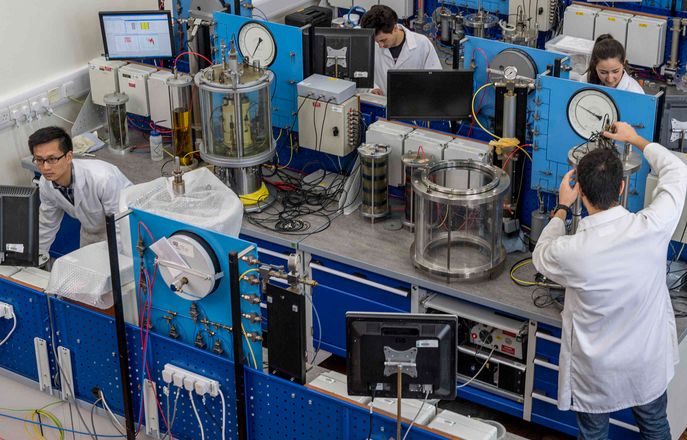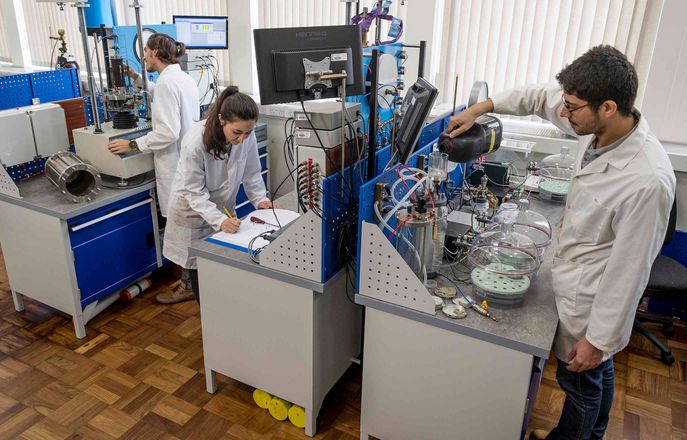Geotechnical Laboratory
Soil mechanics laboratory

Main geotechnical laboratory
A bird's eye view of the main geotechnical laboratory

Bishop Laboratory
Students working in the laboratory
Laboratory Facilities
The Geotechnical Laboratories at Imperial College are perhaps best known for their advanced element testing apparatus and development of experimental procedures.
The testing facilities have contributed to the characterisation of UK Mudrocks, investigation of thermal properties of London clay, cyclic behaviour of stiff clays and sands, and continue to assist in the development of practical pile design methodologies.
The Geotechnical research group benefits greatly from the expertise of the skilled resident technical staff who aid the academic staff to develop, design, build and commission cutting-edge geotechnical apparatus in a purpose-built workshop. Our equipment and advanced instrumentation have been commissioned internationally by research institutions and commercial laboratories.
The most recent apparatus developments include temperature-controlled triaxial and isotropic cells and oedometers, which have enabled research developments in energy geotechnics, in particular ground source energy systems. New relative humidity controlled chambers and incorporation of this technique in suction-controlled thermal oedometers have advanced the group’s research activities in deep nuclear waste disposal, in particular the design of engineered barrier systems. The latest triaxial “creep” cells are leading the work on long-term behaviour and sustainability of geomaterials, with particular emphasis on road, rail and flood defence infrastructure.
The laboratory research is led by Dr Carraro, Dr Standing, Dr Tsiampousi, Prof. Jardine and Prof. Zdravkovic.


